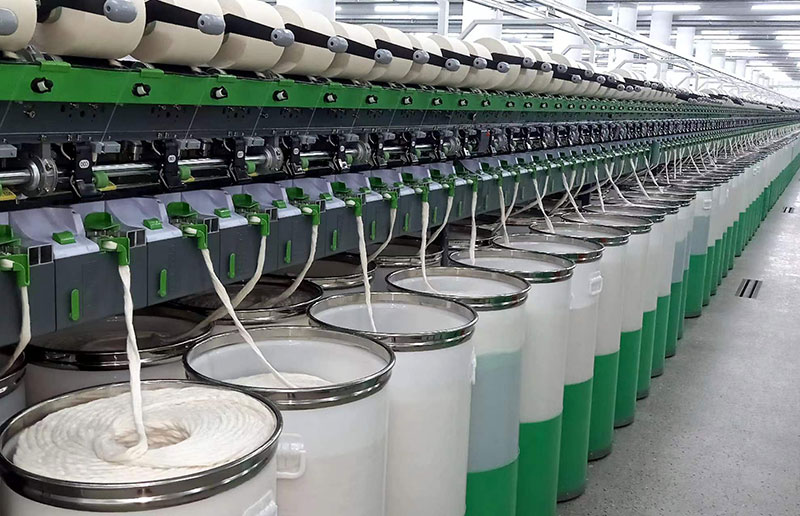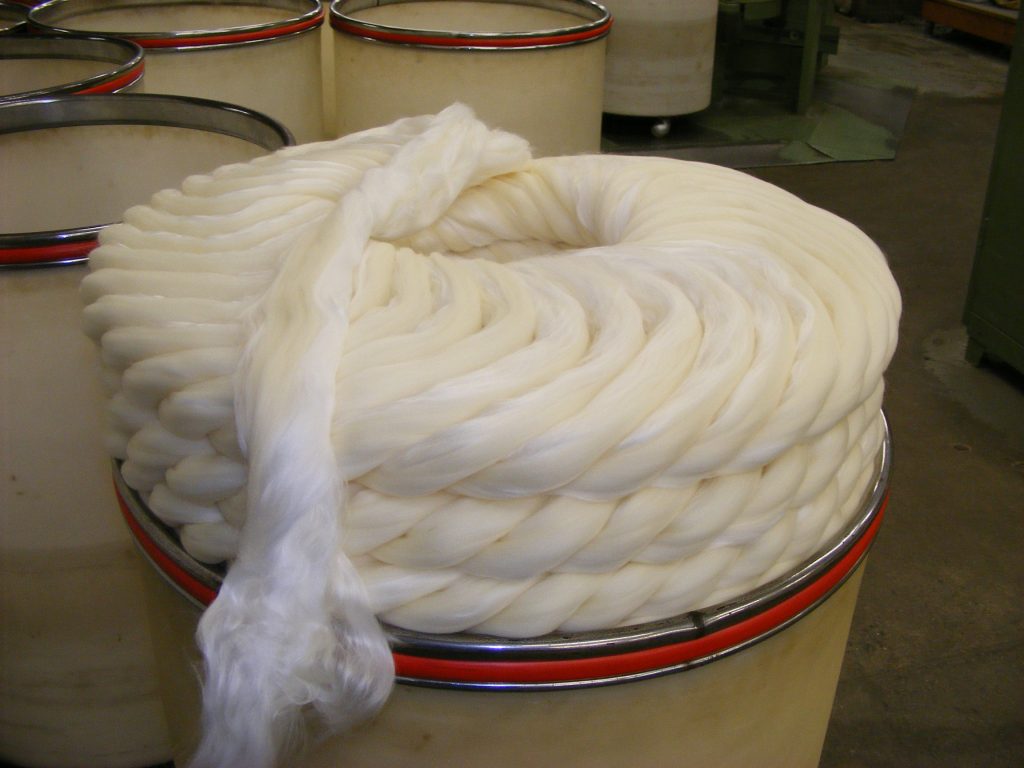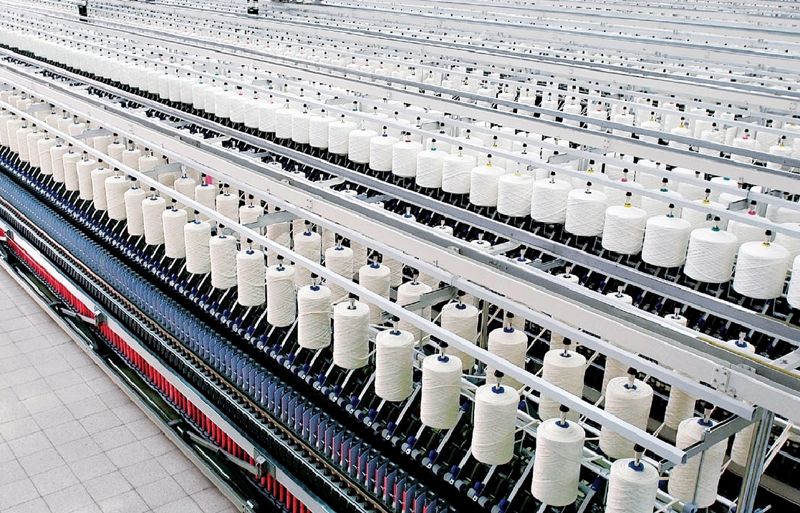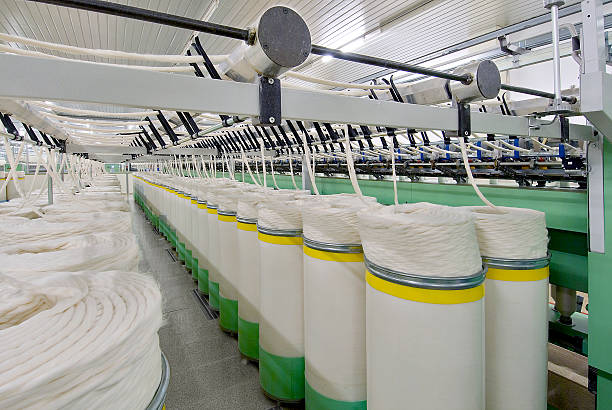The amazing journey of spinning yarn turns unprocessed fibers into the delicate threads used in textiles. There are several steps in this complex process, and each is essential to guaranteeing the end product’s uniformity and quality. The sliver can, which is crucial to the first steps of fiber processing, is one of the main instruments in this process. In this article, we will explore the complete yarn spinning process, from sliver to yarn, and highlight the importance of sliver cans along the way.
Stage 1: Fiber Preparation
The first step in the yarn-spinning process is fiber preparation. Cotton, wool, and synthetic materials are examples of raw fibers that are cleaned and ready for spinning. This involves removing impurities and aligning the fibers to ensure they are parallel and uniform. The cleaned and aligned fibers are then processed into sliver, loose, rope-like strands of fibers that serve as the foundation for yarn production.

The Role of Sliver Cans
Sliver cans are cylindrical containers used to store and transport slivers during the yarn-spinning process. These cans are designed to protect the sliver from contamination and damage, ensuring that the fibers remain aligned and intact. The use of sliver cans helps maintain the quality of the sliver, which is crucial for producing high-quality yarn.
Stage 2: Carding
Carding is the next stage in the yarn-spinning process. The sliver is run through a number of revolving cylinders coated with fine wire teeth during the carding process. These teeth comb and straighten the fibers, further aligning them and removing any remaining impurities. The carding process produces a continuous web of fibers, which is then condensed into a thinner sliver and coiled into sliver cans.
Importance of Carding
Carding is a vital step in the yarn-spinning process as it improves the uniformity and consistency of the sliver. Carding improves the strength and caliber of the final yarn by making sure that the fibers are clean and uniformly aligned.
Stage 3: Drawing
Drawing is the process of further aligning and blending the sliver to improve its uniformity and strength. Multiple slivers are combined and fed through a series of rollers that stretch and thin the fibers. This process, known as drafting, reduces the diameter of the sliver and enhances its strength by aligning the fibers more closely.
Sliver Cans in the Drawing Process
During the drawing process, sliver cans are used to store the drawn sliver, ensuring that it remains protected and properly aligned. The drawn sliver is coiled into sliver cans, ready for the next stage of the yarn-spinning process.

Stage 4: Roving
Roving is a crucial stage in the yarn spinning process where the drawn sliver is further attenuated and twisted to create a roving. Roving is a slightly twisted strand of fibers that serves as an intermediate step between sliver and yarn. This stage involves passing the sliver through additional rollers and applying a slight twist to add strength and coherence to the fibers.
Significance of Roving
Roving prepares the fibers for the final spinning stage by enhancing their strength and coherence. The slight twist added during roving helps prevent the fibers from separating, ensuring a smoother and more consistent yarn.

Stage 5: Spinning
Spinning is the final stage in the yarn production process. During spinning, the roving is fed into a spinning frame, where it is further attenuated and twisted to create yarn. The spinning frame uses a combination of drafting rollers and spindles to stretch and twist the roving, producing a fine and strong yarn.
Types of Spinning
There are several methods of spinning, each suited to different types of fibers and end products. The most common spinning methods include:
- Ring Spinning: A traditional method that produces strong and high-quality yarn by continuously rotating the spindle.
- Open-End Spinning: A faster method that produces bulkier yarn by using a rotor to twist the fibers.
- Air-Jet Spinning: A modern method that uses compressed air to twist the fibers, producing soft and uniform yarn.
Stage 6: Winding
Winding is the process of transferring the spun yarn onto bobbins or cones for storage and further processing. This step makes sure the yarn is twisted uniformly and cleanly, which makes handling and transporting it simpler.
The Role of Quality Control
Quality control measures include regular inspections, testing for strength and uniformity, and monitoring for defects. By maintaining strict quality control, manufacturers can produce high-quality yarn that meets the needs of various textile applications.
Conclusion
The yarn-spinning process, from sliver to yarn, is a complex and intricate journey that transforms raw fibers into fine and strong yarn. Each stage of the process, from fiber preparation and carding to drawing, roving, spinning, and winding, plays a crucial role in ensuring the quality and consistency of the final product. Sliver cans are an essential tool in this process, protecting and maintaining the integrity of the sliver at various stages.
Understanding the complete yarn-spinning process highlights the importance of each step and the tools used, such as sliver cans, in producing high-quality yarn. Whether for clothing, home textiles, or industrial applications, the yarn-spinning process ensures that raw fibers are transformed into the versatile and valuable yarns that form the foundation of the textile industry.

